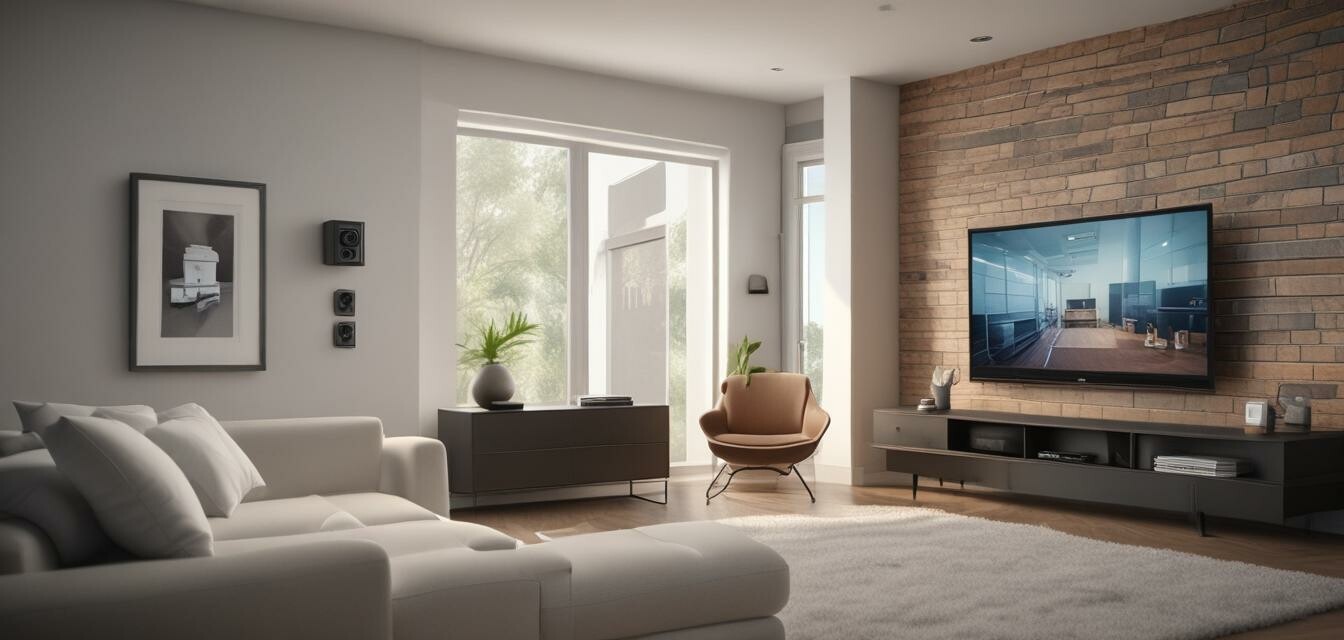
Incorporating Technology into Your Home Safety Plan
Key Takeaways
- Traditional safety measures still play an essential role in home security.
- Incorporating technology enhances the effectiveness of your security strategy.
- Smart devices offer convenience and real-time monitoring capabilities.
- Evaluate your specific needs to choose the right security solutions.
As the world continues to advance technologically, it’s crucial to harness these innovations to enhance the safety of our homes. The integration of technology into home security systems offers a robust solution to many security challenges. This article will guide you through blending traditional safety measures with modern technology to build a comprehensive home security strategy.
Understanding the Basics of Home Security
Before diving into technology, it's important to recognize the core components of home safety. Traditional safety methods, such as locked doors and secured windows, form the foundation of a secure environment. Here are some basic measures to consider:
- Always lock doors and windows.
- Utilize solid core doors and deadbolts.
- Install outdoor lighting to illuminate entry points.
- Establish a neighborhood watch program to foster community safety.
Why Incorporate Technology?
The addition of technology not only enhances the level of security but also offers advanced features that traditional methods lack. Here’s why you should consider integrating technology into your home safety plan:
- Real-Time Monitoring: Many security systems now offer live feeds directly to your smartphone, allowing you to monitor your home from anywhere.
- Alerts: Get instant notifications on your phone for any unusual activity detected around your property.
- Remote Access: Control lights, locks, and cameras remotely, ensuring you can secure your home even when you’re away.
- Peace of Mind: Knowing you have technology working to protect your home provides reassurance for you and your family.
Types of Technological Solutions for Home Safety
1. Security Cameras
Adding security cameras can be an effective deterrent against intruders. Here's a quick comparison of various types of security cameras:
| Camera Type | Features | Best For |
|---|---|---|
| Wired Cameras | Reliable, high-quality video, less susceptible to hacking | Surveilling indoor and outdoor areas |
| Wireless Cameras | Flexible placement, easy installation, connects to Wi-Fi | Homeowners seeking quick setup |
| Solar-Powered Cameras | Eco-friendly, no reliance on electricity, ideal for remote locations | Outdoor areas without power sources |
2. Smart Doorbell Cameras
Doorbell cameras are a great addition to enhance your entryways. They not only record who comes to your door, but often include two-way communication features.
3. Home Automation Systems
Smart automation systems allow for voice-controlled or app-controlled devices. You can automate lights, thermostats, and even locks to enhance security.
Best Practices for Integrating Technology
Incorporating technology is not just about purchasing devices; it's about effective installation and usage:
- Assess your home layout to determine optimal device placement.
- Regularly update device firmware and software for enhanced security.
- Use strong passwords and enable two-factor authentication where possible.
- Schedule routine checks to ensure all devices are functioning correctly.
Balancing Traditional Methods and Technology
The best approach to home safety is a combination of traditional methods and modern technology. Here's how to effectively marry the two:
- Use security alarms and sensors alongside surveillance cameras.
- Have a solid lighting plan – use smart bulbs in conjunction with outdoor lighting.
- Implement smart locks while ensuring traditional deadbolts are used during the night.
- Combine neighborhood watch with smart alerts from your home security system.
Pros
- Enhanced security features with real-time monitoring
- Convenience and ease of use with automation
- Ability to receive immediate alerts on suspicious activity
- Improved awareness and visibility of your home surroundings
Cons
- Potential reliance on technology can lead to vulnerabilities
- Initial costs for setup can be high
- Technological malfunctions can occur
Conclusion
Incorporating technology into your home safety plan can dramatically increase the security of your home. By augmenting traditional safety measures with modern innovations, you not only create a more secure environment but also enhance peace of mind for you and your loved ones. Evaluate your specific needs and blend these strategies effectively to improve your home security.
Learn More About Home Safety
To explore more tips and strategies related to home security, check out our blog on Home Security Buying Guides and get informed about the latest trends in technology with our article on Latest Security Technology Trends.
